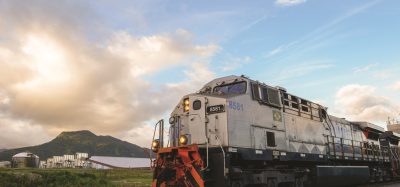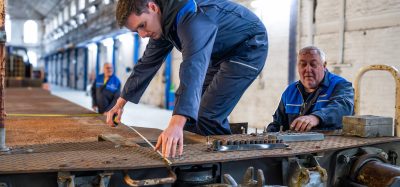Research project finds way to enable more freight by rail
Posted: 16 November 2022 | Elliot Robinson (Editorial Assistant - Global Railway Review) | 1 comment
A research project by the Rail Safety and Standards Board has discovered a way for UK freight train operators to safely haul more goods wagons per train.
A research project by the Rail Safety and Standards Board (RSSB) has allowed freight train operators in Great Britain to safely haul more goods wagons per train than current practices allow, improving their environmental impact and financial efficiency.
The research has enabled existing couplers, which connect freight wagons, to safely connect more load. The evidence means a 34.5 tonne coupler rating can increase 16 per cent to 40 tonne, and some 56 tonne rated couplers increasing 13 per cent to a new 63 tonne rating. Crucially the uprated values can be applied to wagons in use today without the need to upgrade or undertake a detailed engineering assessment.
Case studies
As a result of the research, more than 12,000 rail freight wagons, over 50 per cent of Britain’s fleet, will receive an increase in traction rating (the amount of weight it is able to safely haul). RSSB’s real-world case studies found that increasing coupler strength ratings will provide huge environmental and financial benefits. On a typical Anglo-Scottish journey, over two tonnes of carbon dioxide emissions can be saved, as well as considerable amounts of nitrogen oxides and particulate emissions. Significant financial efficiencies are also delivered due to the train length increase.
Examples of a case study from the research include:
- A 50-mile journey (each way) with 24 wagons. This increased to 27 wagons and provided environmental savings of 0.25 tonne CO2 (Carbon Dioxide). The projected annual financial savings were £291,000
- A 235-mile journey (each way) with 14 wagons. This increased to 16 wagons and provided environmental savings of 1.4 tonne CO2. The projected annual financial savings were £245,000
- A 235-mile journey (each way) with 19 wagons. This increased to 23 wagons and provided environmental savings of 2.1 tonne CO2. The projected annual financial savings were £364,000.
The rail industry is now implementing the improved freight coupler load ratings and identifying routes suitable for longer freight services.
Related news you will enjoy:
Reactions to the research
“By enabling longer trains, more goods and materials can be hauled per journey, this will have a hugely positive impact on emissions and financial efficiency,” Aaron Barrett, Lead Research Analyst for RSSB, said. “This research project is the first in a series, funded by the Department of Transport, designed to help the rail freight sector in Great Britain. Our freight research programme is currently focusing on the safe operation of rail freight, raising the average speed of services, enabling the operation of longer trains and reducing emissions.”
“It’s great to see how we’re continuing to improve our freight network, so even more goods and materials can be moved with every journey, strengthening the UK supply chain,” Huw Merriman, Rail Minister, said. “Investment into new ideas and innovations is vital as we continue to strengthen the UK supply chain and strive towards greener freight and net zero by 2050.”
“Rail Freight Group members have been working hard to improve the efficiency and performance of their rail freight services and look forward to moving more goods and materials on the new capacity this research has identified,” Maggie Simpson, Director General of the Rail Freight Group, said. “RSSB’s research projects are bringing modern thinking and analysis to age old issues and will enable more goods to be hauled by train without needing investment in new infrastructure or rolling stock.”
Related topics
Cargo, Freight & Heavy-Haul, Funding & Finance, Operational Performance, Regulation & Legislation, Safety, Sustainability/Decarbonisation
Related organisations
Department for Transport (DfT), Rail Freight Group (RFG), Rail Safety and Standards Board (RSSB)









All other modes, those redundant and resilient (robust) decisively add load capacity, for lower costs, etc.
Railways, regrettably are “cemented” at a primitive, low price, but high cost, track standard. Accordingly, now year 2023, single available option, is longer trains… This is not sustainable!
Redundancy at railways, the needed, now calls for a safely calculable railway – for basics!